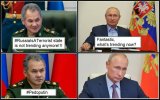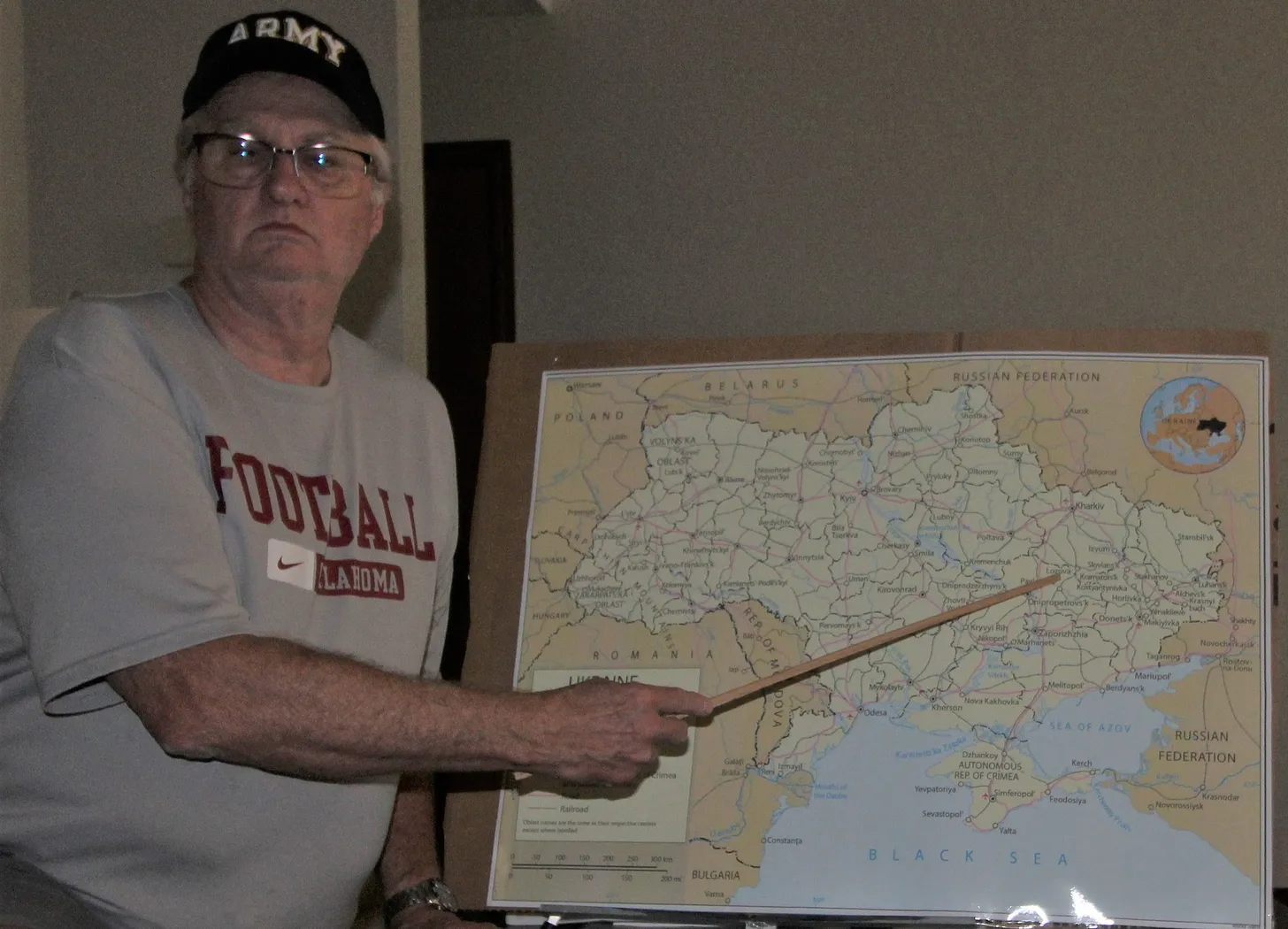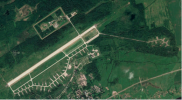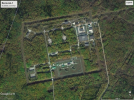Antares
Respected Leader
Ollut tosiaan "hiljainen uutispäivä" ja DefMonin tilannekatsaus kielii samaa, ei paljoa raportoitavaa eri suunnista. Poimin tästä yhden mikä osui silmään, tämä on Kreminnan / Lysitsanskin / Severodonetskin suunnalta:
Reports states it's very loud around Pryvillya, it's possible there is some AFU advances in that area.
Ei nuolaista ennen kuin tipahtaa: "äänekkyys" tarkoittanee tykistöä, heittimiä ja muita paukuttimia. Toisaalta se yleensä enteilee myös jalkaväen kokeilua, vähintään tiedustelijoiden ja muiden hiipparien toimesta. Kirjoittaa "loud around" eli ympärillä paukkuu? Kreminnassa arvatenkin, mutta tämä Pryvillya herätti mielenkiinnon.
Mikä tuossa kiinnostaa?
Pryvillya sijaitsee Donets-joen eteläpuolella, kun taas Kreminna, Rubizne ja Severodonetsk sijaitsevat joen toisella puolella. Alla Google Mapsista lähikuva seudusta, koska useimmissa kartoissa joet eivät näy riittävän selvästi:

Jos katsoo karttaa hieman kauempaa niin Donets-joen etelärantaa seuraillen asutuskeskukset ovat länsi-itä -suunnassa: Serebryanka - Bilohorivka - Shypylivka - Pryvillya.
Joki tekee tuollaisen jyrkän mutkan tässä kohdassa ja Pryvillya sijaitsee tämän mutkan pohjukassa. Kuten kuvasta näkee, Donets-joki kääntyy tämän jälkeen etelään. Kaksi tai kolme kilometriä Pryvillyan eteläpuolella on Novodruzhes'k ja siitä pari kolme kilometriä etelämmäs on Lysitsansk.
Ei ehkä kannata lukea yhden twiitin takia liikaa tästä, mutta on mahdollista että Ukraina hivuttautuisi Kreminnan tuntumaan myös etelän suunnasta. Kuten nähdään, Rubizne on joen itäpuolella ja Severodonetsk sen eteläpuolella aavistuksen kuvan rajauksen ulkopuolella.
Tällä seudulla on näitä asutuskeskuksia hyvin tiuhassa. Sopisi hyvin hiipivälle jalkaväelle. HUOM: tästä ei ole kirjoitetu missään, kunhan vain innostuin tutkimaan maastoa tarkemmin ja tämä kiinnitti huomion.
Reports states it's very loud around Pryvillya, it's possible there is some AFU advances in that area.
Ei nuolaista ennen kuin tipahtaa: "äänekkyys" tarkoittanee tykistöä, heittimiä ja muita paukuttimia. Toisaalta se yleensä enteilee myös jalkaväen kokeilua, vähintään tiedustelijoiden ja muiden hiipparien toimesta. Kirjoittaa "loud around" eli ympärillä paukkuu? Kreminnassa arvatenkin, mutta tämä Pryvillya herätti mielenkiinnon.
Mikä tuossa kiinnostaa?
Pryvillya sijaitsee Donets-joen eteläpuolella, kun taas Kreminna, Rubizne ja Severodonetsk sijaitsevat joen toisella puolella. Alla Google Mapsista lähikuva seudusta, koska useimmissa kartoissa joet eivät näy riittävän selvästi:

Jos katsoo karttaa hieman kauempaa niin Donets-joen etelärantaa seuraillen asutuskeskukset ovat länsi-itä -suunnassa: Serebryanka - Bilohorivka - Shypylivka - Pryvillya.
Joki tekee tuollaisen jyrkän mutkan tässä kohdassa ja Pryvillya sijaitsee tämän mutkan pohjukassa. Kuten kuvasta näkee, Donets-joki kääntyy tämän jälkeen etelään. Kaksi tai kolme kilometriä Pryvillyan eteläpuolella on Novodruzhes'k ja siitä pari kolme kilometriä etelämmäs on Lysitsansk.
Ei ehkä kannata lukea yhden twiitin takia liikaa tästä, mutta on mahdollista että Ukraina hivuttautuisi Kreminnan tuntumaan myös etelän suunnasta. Kuten nähdään, Rubizne on joen itäpuolella ja Severodonetsk sen eteläpuolella aavistuksen kuvan rajauksen ulkopuolella.
Tällä seudulla on näitä asutuskeskuksia hyvin tiuhassa. Sopisi hyvin hiipivälle jalkaväelle. HUOM: tästä ei ole kirjoitetu missään, kunhan vain innostuin tutkimaan maastoa tarkemmin ja tämä kiinnitti huomion.


 Nyt tarkemmin katsottuna hauskana yksityiskohtana mariinilla tuossa kuvassa ”vaaraton” leimalla oleva Apilas selässä.
Nyt tarkemmin katsottuna hauskana yksityiskohtana mariinilla tuossa kuvassa ”vaaraton” leimalla oleva Apilas selässä.






